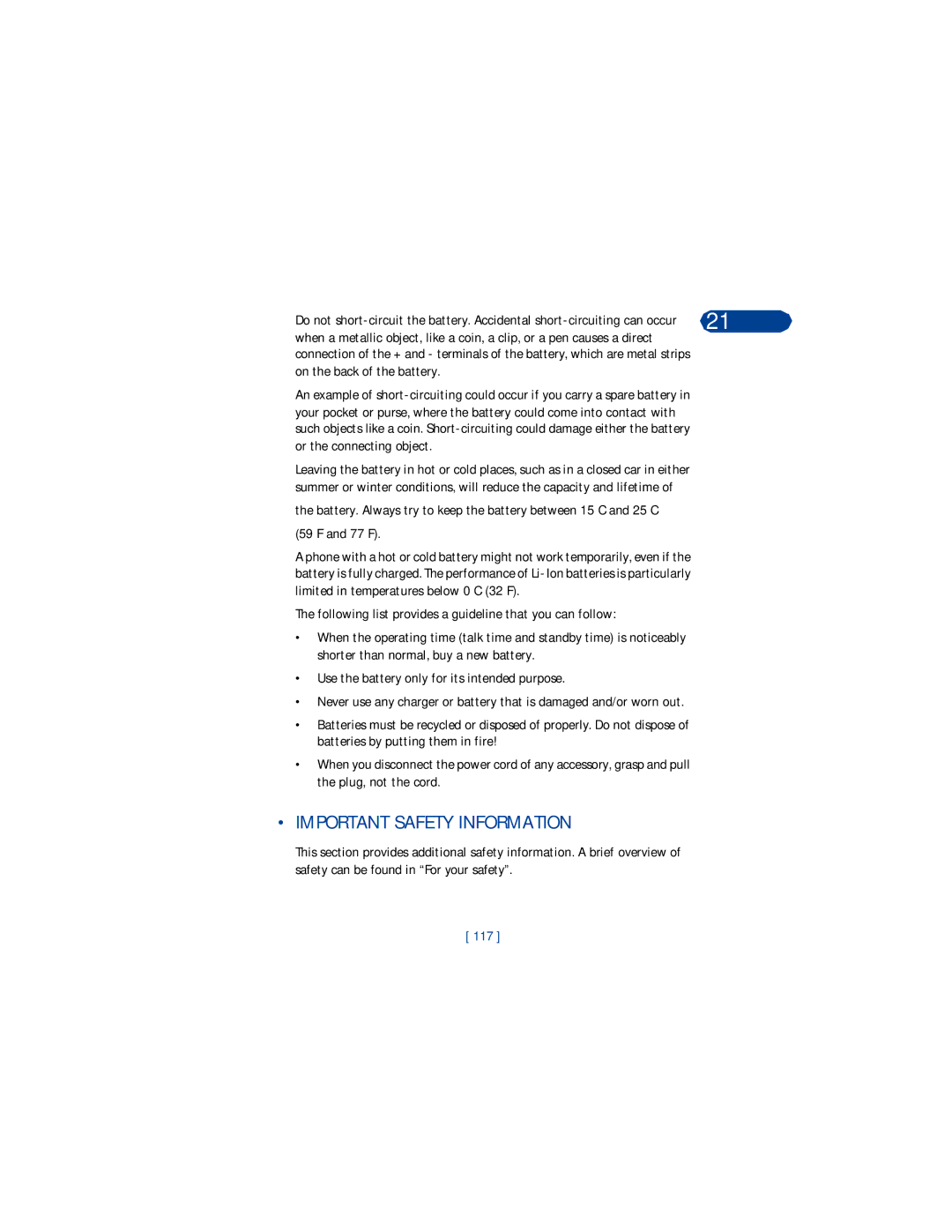Do not | 21 |
when a metallic object, like a coin, a clip, or a pen causes a direct connection of the + and - terminals of the battery, which are metal strips on the back of the battery.
An example of
Leaving the battery in hot or cold places, such as in a closed car in either summer or winter conditions, will reduce the capacity and lifetime of
the battery. Always try to keep the battery between 15 C and 25 C
(59 F and 77 F).
A phone with a hot or cold battery might not work temporarily, even if the battery is fully charged. The performance of
The following list provides a guideline that you can follow:
•When the operating time (talk time and standby time) is noticeably shorter than normal, buy a new battery.
•Use the battery only for its intended purpose.
•Never use any charger or battery that is damaged and/or worn out.
•Batteries must be recycled or disposed of properly. Do not dispose of batteries by putting them in fire!
•When you disconnect the power cord of any accessory, grasp and pull the plug, not the cord.
•IMPORTANT SAFETY INFORMATION
This section provides additional safety information. A brief overview of safety can be found in “For your safety”.
